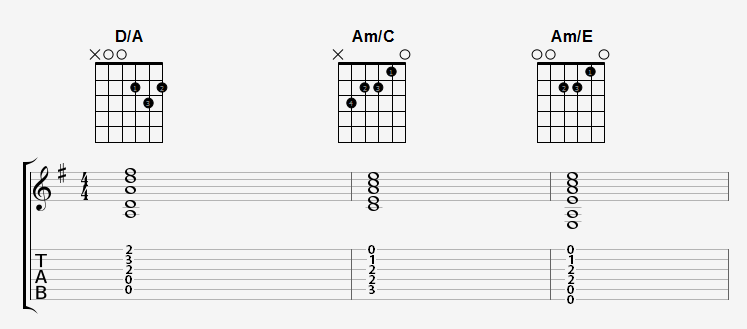You may have seen chords like Am/C or G/F#. You may have just learned the chord without understanding it. You may have panicked and not played it.
Here is a quick explanation of how it works
The first part of the slash chord is the main chord being played. Some of the slash chords add a lower note, and some take away the lowest notes and replace them with the second part of the slash.
For example, on Am/C, it’s mainly the Am that’s being played, but with an added C note. In this case, the ‘A’ root note is not played, because you will play the C instead.
In another example, for D/A, you are mainly playing a D chord, but you also play the A string as the root note, so in this case no notes have been removed.
Is it an inversion?
An inversion is when you use one of the notes that make up a chord (eg. C E G = the C chord), and place one of those notes as the lowest note (e.g. play the low E string and you get C/E).
When is it not an inversion?
When you add a note that’s in the same key, but wasn’t in the chord initially. For example, G/F# is not an inversion; it’s just called a slash chord with an alternative bass note, because the regular G chord is only usually made up of the notes G, B and D. An inversion of G would be G/B or G/D.
Further Reading
There is some quite good info here that shows you various chords: http://www.scenicnewengland.net/guitar/chords/slash.htm
